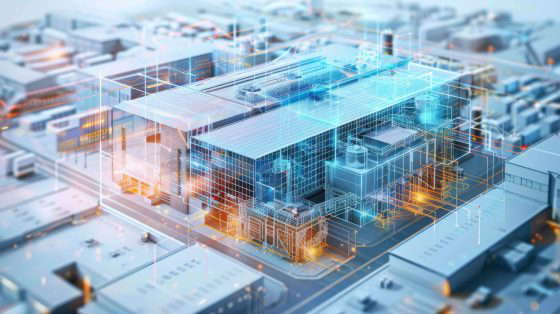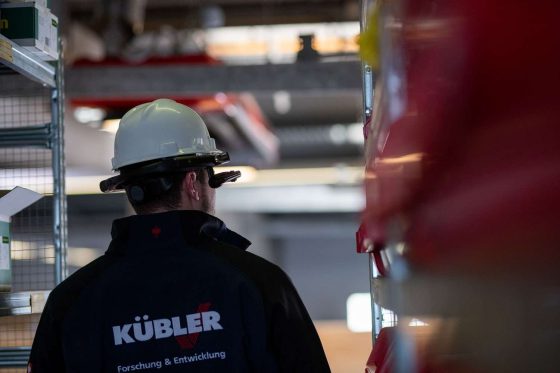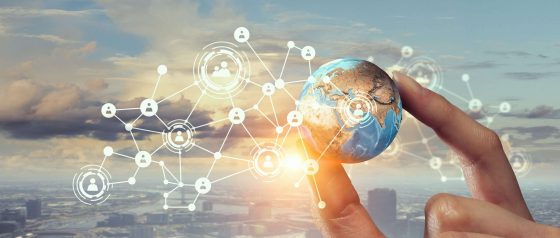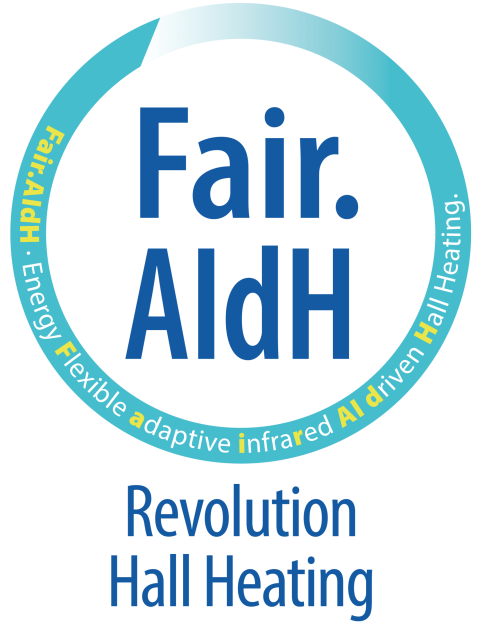How to find the ideal hall heating

First of all, realize that industrial and commercial buildings have different heating requirements than homes or offices. Sounds trivial? But it's not. In fact, many planners still make the mistake of using a similar heating strategy to that used for multi-storey buildings. The problem: warm air rises upwards. With low ceiling heights, such as in offices or apartments, this is not relevant. In halls, on the other hand, the warm air collects virtually uselessly at great heights under the hall roof.
Until it is pleasantly warm on the floor, operators have to channel a lot of heating energy into the hall and use systems that direct air flows back down again. This is basically a waste of money, as heat in large halls is usually only required at a person height of around two meters, but not at higher levels. It is therefore usually sufficient to heat 20 percent of the room volume. Even then, employees are pleasantly warm and can develop their full productivity.
Find the right technology for your hall heating
Now the question arises as to which technology should be used to optimize the approximately 20 percent of your Targeted heating of the hall. If you look around the market, you'll notice: There are centralized and decentralized Heating systems. Central systems include industrial underfloor heating systems, centrally supplied, water-based air heaters and hot water radiant ceiling panels. They work with a central energy generator and a pipe system that transports hot water to the desired location.
Decentralized heating systems, on the other hand, include infrared heaters that can be mounted under the ceiling. They are energy-flexible* and can be powered by renewable energies such as electricity or hydrogen, or traditionally by gas, and work with electromagnetic waves. As soon as the waves hit a solid object, such as a person or the room enclosure, the energy is converted into heat. The key feature: infrared heaters do not heat the air! This means that only the area where people are present and using the space is heated. This saves large amounts of energy and makes infrared heaters very efficient.
At the same time, hall operators enjoy flexibility. They divide the hall into different heating zones using several infrared radiators - and provide employees in order picking, for example, with more heat than colleagues in production, where Machines already provide sufficient basic heat provide. Flexibility that increases employee satisfaction. These decentralized solutions also make it easier to adapt the system when the hall is converted compared to a centralized system.
Another advantage of the Infrared technologyIt is quick to react. Operators switch the heating on and off in a similar way to a light. As the energy does not take a detour via the air, heat is available virtually at the touch of a button. And in the age of automation, you don't even need to switch it on and off manually. This task is performed by intelligent control technology, which adapts the heating output to the changing conditions. Users thus reduce energy costs by up to 70 percent, so that the investment in the heating system pays for itself in a short time.
* Fair.AIdH*technology. The new energy-flexible heating technology was developed specifically for the economical decarbonization of industrial buildings and has already won numerous awards. The abbreviation stands for: Energy Flexible, adaptive, infrared, AI driven Hall heating.
Get an overview of the requirements of your hall
In order for hall heating systems to develop their full potential, they should be adapted to your hall like a tailor-made suit. However, this adaptation by an external service provider will only be successful if you have a clear picture of your hall building, the hall usage and your requirements for the heating in advance. Pay particular attention to the factors that could influence the temperature. These questions can help you:
- What are the dimensions of your hall?
- What is the condition of the building?
- How is the hall used?
- Are there different areas and times of use?
- What about the gate opening times?
- How has heating been used so far - is there any consumption data?
- What goals and requirements should the new heating system meet?
- What decarbonization strategy are you pursuing?
The answers to these questions form a foundation on which your heating partner can build.
Think through different energy sources for your hall heating system
In times of climate change, the German government's targets are ambitious: Germany is to be climate-neutral by 2045 at the latest. The economy is making corresponding efforts, CO₂emissions. Many companies are moving away from fossil fuels and instead relying on renewable energies and technologies such as solar thermal energy or electric heat pumps.
If you decide to go down this route, however, you should be aware that you are committing to a central heating system. And for this you need a hydraulic distribution system. In addition, such a system is often associated with two to four times higher investment costs and is comparatively slow to react, meaning that in many cases the heat supply cannot be adapted quickly enough to dynamic requirements.
Infrared heaters are energy-flexible and can be powered by renewable energies such as electricity or hydrogen, or—as long as these are not yet sufficiently available—by natural gas. Here is some important information: Apart from the fact that gas is still necessary as a bridging technology and for operational safety, and is considered the lowest CO₂ emitter among conventional fuels compared to other fossil fuels because it has the lowest primary energy factor of all, gas is becoming increasingly green thanks to the upcoming supply of renewable hydrogen (power-to-gas technology), gas is becoming increasingly green and, especially in conjunction with Germany's excellently developed gas network, is considered one of the most important energy sources for the future.
Now you may be asking yourself: Since 2024, the Building Energy Act (GEG) stipulates that I may only use renewable energies for heating in the future. Doesn't that mean infrared heaters are prohibited? No! According to the GEG, if your hall is over four meters high, you are no longer bound to use renewable energy sources if you want to renovate your old existing halls to make them more energy efficient. While central heating systems are required to use renewable energy in order to meet GEG requirements, these can also be implemented with natural gas using the most efficient infrared hall heating technology. This means you don't have to worry about compliance.
Take a close look at suppliers of hall heating systems
To ensure that you find an efficient and future-proof hall heating system, you should check the competence of providers in advance. The following questions can be used as a guide:
- What references does the provider have?
- Is there a nationwide service (if you have or would like to set up several locations)?
- Can you be sure that you will still receive spare parts and service in 15 years' time?
- Does the provider have a development department that is innovative and develops products according to modern standards?
- Do the employees appear competent?
- Is the system flexible? Can it be easily adapted to changes in legislation and conversions?
It is also advisable to focus not only on the price of the hall heating system, but also on the total cost of ownership (TCO) - i.e. the operating costs over the entire life cycle. Only with this value can you calculate whether it is a worthwhile investment.
-
Whether concert fans, art lovers or party enthusiasts: the room temperature also determines the success of events. How hosts ensure a comfortable climate in event halls and exhibition rooms with hall heaters.
-
Fair.AIdH - ideal heating systems for special buildings Halls have different heating requirements than office or other multi-storey buildings. As a rule, "normal" hot water heating systems inevitably fail due to the enormous room heights and dimensions: they consume an unreasonable amount of energy, offer little flexibility and thermal comfort, can hardly be controlled variably, heat hall ceilings instead of work areas, are often simply uneconomical and [...]
-
New gas heating quickly in 2023 - often the cheapest decision that also pays off for the environmentThe BMWK is currently causing a stir with a draft bill. This is because it involves a categorical ban on gas heating systems. According to the plan, from 2024, only heating systems powered by 65 % renewable energies may be used. Formally, this can only be heat pumps, district heating or biomass heating. This raises the question: what about the openness of technology in Germany? And who should pay for it? Decentralized gas-powered heating systems are often the only economically and functionally viable solutions, especially in hall buildings.
-
Whether in industry or in private residential construction - anyone deciding on a heating system or hall heating of the future today is faced with a lot of question marks. Which energy scenarios will actually determine the future? Which technologies will then become relevant? Is it still worth investing in fossil-fuel systems? What does the traffic light say? And taking all these questions into account, what is the best functional and economical heating solution for the hall building in the long term?





